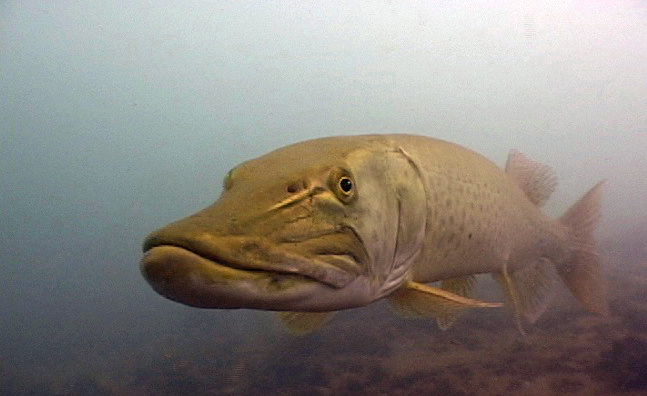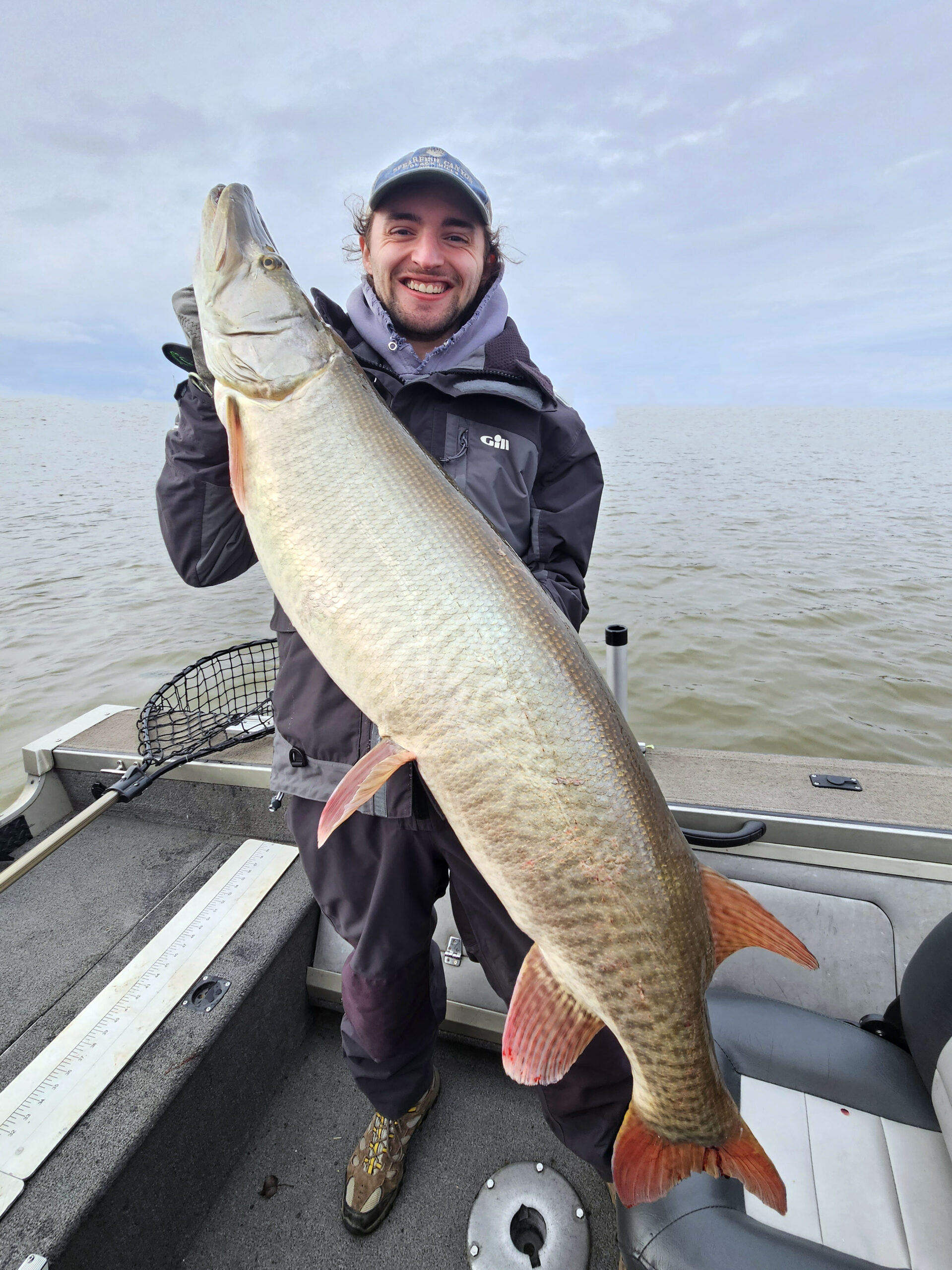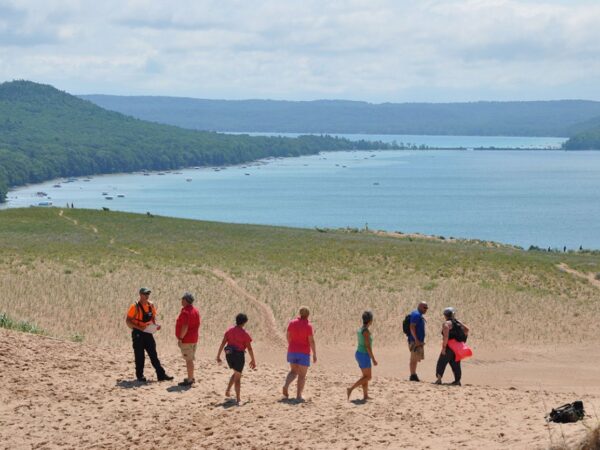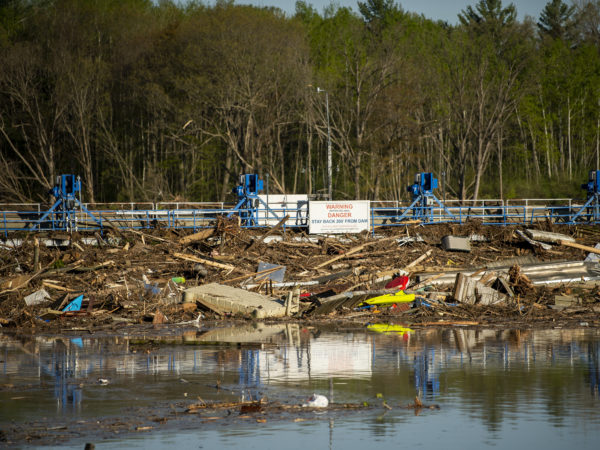
As apex predators, adult muskie occupy the very top tier of the Great Lakes food chain. Reaching up to six foot in length with teeth lining their jaws, the roof of their mouths and their throats, few can escape them. They are feared by most species underwater and revered by many people above.
Great Lakes Now columnist and producer Kathy Johnson recently spoke with William Schultz, founder of the non-profit advocacy group Michigan Muskie Alliance. Their conversation has been edited for length.
KJ: Why are muskie your fish of choice?
WS: It started with a couple of us in a rowboat when we were 14 years old. We were just out fishing for whatever and we came across a muskie. We were just boys and we’d never seen anything that big before, and we knew we had to go for it.
KJ: How many have you caught to date?
WS: Over the years? Thousands. A safe guess would be somewhere between 4,000 and 5,000.
KJ: That’s a lot of muskie!
WS: I go a lot and I’ve been doing it for a long time.
KJ: What’s the biggest one you’ve caught?
WS: Just short of 57 inches.
KJ: How many on average do you catch each year?
WS: I’ve gotten 152 in one season but had other years where it’s been a struggle to catch 30.
KJ: Why did you start the non-profit organization?

William Schultz’s son holding a large DNR-stocked muskie. (Photo courtesy of Schultz)
WS: I started Michigan Muskie Alliance because we were recognizing problems within the current regulations. We have spent a lot of time over the last 20 years, getting things changed in the state, just getting it more in line with what other states do and what we need to do to keep the fish going. Because they have a hard time at the places where they aren’t stocked and they have a hard time spawning, too.
KJ: Anglers who like to catch perch and walleye tend not to like muskie. How do you counter that?
WS: You look at Lake St. Clair. It’s got one of the best populations of muskies anywhere in North America. And it’s also an outstanding walleye fishery. It’s also outstanding for smallmouth and largemouth bass and pretty much everything you want to catch. You can look at that all throughout North America. The best walleye lakes are the best muskie lakes. There’s a reason for that. If you don’t have that apex predator, you don’t have a well-balanced fishery.
KJ: I don’t think most people realize that.
WS: It’s a tough, tough sell sometimes. We do a lot of sport shows teaching the kids that are going to be future anglers, but also a lot with adults too. People will say, ‘I’d love to not see muskie in Muskegon Lake because they’re going to eat all the perch and walleyes.’ We explain that’s actually not true. If you look at all the studies that have been done, muskie shows up in their diet just as much as the walleye.
KJ: So, they eat each other as much as anything else?
WS: Exactly.
KJ: Their reputation for eating anything they can catch seems to work against them.
WS: It does.
KJ: As divers, we spend a lot of time around anglers and it seems like most only target one specific species.
WS: We’re blessed with that in Michigan. You just want smallmouth; you can do that. If you just want walleye; you can do that. You have the ability to do any.
KJ: Having been in the sport so long, do you see the DNR stocking program making a difference?
WS: Definitely. From our perspective, watching this program struggle over the last 12 years, it’s good to see it on the doorstep of being able to get fish from those brood lakes.
KJ: And an advantage of the brood lakes is they warm up earlier so the adults spawn earlier which will give the fingerlings more time in the hatchery to grow.
WS: It’s at least another month of growth, if not six weeks. Which is a huge a difference in the fall when they’re stocked. The survival between what they’re producing now and what they will be producing from the brood lake egg takes is a big difference. The mortality rate drops by 30 to 40% for every inch of growth. From the angler’s perspective, we know how many are lost in the first year just because they’re so small that when that doesn’t happen going forward, it’s going to make a difference.
KJ: Any last advice for today’s 14-year-olds who are out there looking for their first big fish?
WS: Know the difference between a muskie and a pike because it can be such a dramatic difference. Some of the waters up north have a 24 inch pike size limit, but a 50 inch size limit on muskie. We don’t want anybody to make that mistake so we bring a replica muskie to the sports shows. All the kids get to take their picture with it and we call it the most photographed muskie in the history of the world.
Catch more news at Great Lakes Now:
I Speak for the Fish: Meeting the mysterious muskie
Who caught the world’s largest muskie? Even the experts don’t agree
Featured image: William Schultz’s son holding a large DNR-stocked muskie. (Photo courtesy of Schultz)
6 Comments
-
Great article and thanks for the great work that you’re doing, keep it up!
-
Caldron Falls has a ton of Musky. We have few walleye, and small panfish.
-
Gonna need more hooks and tasty bait gulp! Good article; enjoyable read and I will also add how I like how you formated the conversation between you and the Will fisherdude! Gonna have to row row to the middle of st clair and kickback…..
-
Muskies are a decent addition to any food chain,however I have seen the problem created by the quest for larger trophy fish. By not taking caught fish Musky destroy the general population of a lake. I’ve seen several examples in Northern Wisconsin.
-
I have a 4.5 acre private pond stocked with bluegill, crappie, walleye, large mouth bass, a few perch, and six muskies. Muskies were put in because panfish population was getting out of control. Now, after 5 years of the muskies, it’s hard to catch anything but runt bass. Probably time to take a few of the muskies out?
-
Just look at millacs lake in Minnesota. Once a great walleye lake. Now restricted to 1 fish. Reason. Musky planted years ago. Messed up Cisco and shad population. I use to see schools of bait fish on locator. Have not seen baitfish schools for 15 years. Many time dnr mgmt fails. Just let nature be. Mother nature has been doing a good job for a long time. Does anyone have a history of success with a for managed lake.




